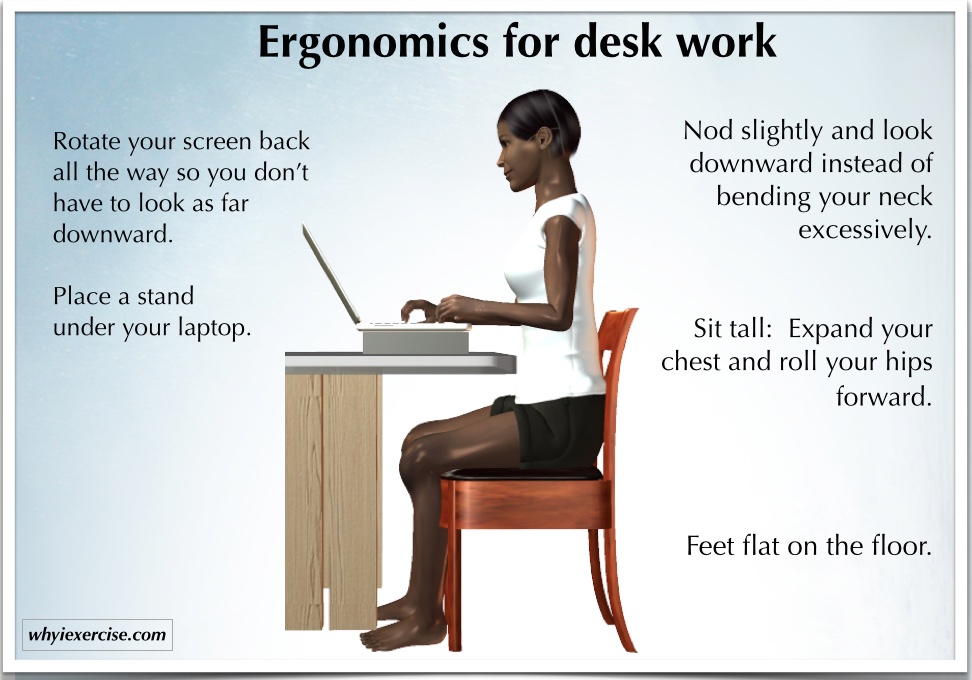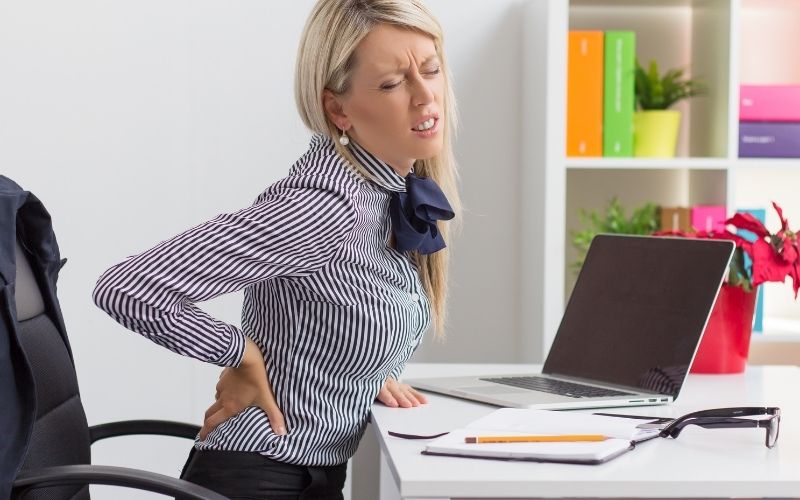Understanding Lower Back Pain from Sitting

Sitting for extended periods can put significant strain on your lower back, leading to discomfort and pain. This is due to a combination of factors, including poor posture, muscle imbalances, and the biomechanics of sitting.
Common Causes of Lower Back Pain from Sitting, Lower back pain sitting in office chair
Prolonged sitting can contribute to lower back pain through several mechanisms. Understanding these causes can help you identify and address the underlying issues.
- Muscle Imbalances: Sitting for long hours can lead to muscle imbalances, where some muscles become tight and others become weak. This can affect the natural curves of your spine and contribute to pain.
- Reduced Blood Flow: Sitting for extended periods can restrict blood flow to the lower back muscles, leading to stiffness and pain.
- Pressure on Spinal Discs: The weight of your upper body is distributed differently when sitting compared to standing. This can put pressure on the spinal discs, leading to degeneration and pain.
- Poor Posture: Slouching or sitting with improper posture can strain the muscles and ligaments in your lower back, contributing to pain.
Biomechanics of Sitting and Lower Back Pain
The way you sit can significantly impact your lower back health. Here’s how prolonged sitting affects your spine and muscles:
- Increased Load on Lumbar Spine: Sitting for extended periods increases the load on your lumbar spine, which is the lower part of your back. This is because your spine is not in its natural alignment when you are sitting.
- Reduced Muscle Activation: Sitting often leads to reduced muscle activation in your core and back muscles, which are essential for maintaining proper posture and supporting your spine.
- Compression of Spinal Nerves: Prolonged sitting can compress the spinal nerves in your lower back, leading to pain, numbness, and tingling.
Postural Issues Contributing to Lower Back Pain
Certain postural habits can contribute to lower back pain when sitting. These issues can strain your spine and muscles, leading to discomfort.
- Slouching: Slouching forward puts excessive pressure on your lower back, straining the muscles and ligaments.
- Sitting with Legs Crossed: Crossing your legs can tilt your pelvis and put uneven pressure on your lower back, leading to pain.
- Sitting with Feet Not Flat on the Floor: When your feet are not flat on the floor, your lower back has to work harder to maintain balance, leading to strain and pain.
Tips for Maintaining Proper Posture While Sitting
By adopting good posture habits, you can minimize the strain on your lower back and reduce your risk of pain.
- Sit Upright: Maintain a neutral spine, with your shoulders relaxed and your back straight.
- Adjust Chair Height: Ensure your chair height allows your feet to be flat on the floor and your thighs to be parallel to the floor.
- Use Lumbar Support: A lumbar support cushion can help maintain the natural curve of your lower back and reduce strain.
- Take Breaks: Get up and move around every 30-60 minutes to reduce the amount of time you spend sitting.
- Stretch Regularly: Regular stretching can help improve flexibility and reduce muscle tension in your lower back.
Office Chair Ergonomics and Back Pain: Lower Back Pain Sitting In Office Chair

An ergonomic office chair is designed to support your body’s natural curves and reduce strain on your back. This can help prevent lower back pain and improve your overall comfort while sitting. A good office chair can be a significant investment in your health and well-being.
Ergonomic Features
Lower back pain sitting in office chair – Several key features of ergonomic office chairs contribute to better posture and reduced back pain. Let’s delve into some of these features:
Adjustable Seat Height
Adjusting the seat height is crucial for maintaining a neutral posture. The ideal height allows your feet to be flat on the floor, with your knees at a 90-degree angle. This position ensures proper blood circulation and reduces strain on your back and legs.
Lumbar Support
Lumbar support provides crucial back support, especially in the lower back region. A good ergonomic chair will have a built-in lumbar support mechanism or an adjustable lumbar cushion. This support helps maintain the natural curve of your lower back, preventing slouching and reducing strain on the spine.
Armrests
Armrests are often overlooked, but they play a vital role in supporting your arms and shoulders. They help reduce strain on your neck and shoulders by allowing you to relax your arms. Ideally, armrests should be adjustable to accommodate different heights and positions.
Checklist for Choosing an Ergonomic Chair
Consider these factors when choosing an ergonomic office chair:
- Adjustable seat height
- Lumbar support
- Adjustable armrests
- Adjustable backrest
- Seat depth adjustment
- Swivel base
- Casters that move smoothly
- High-quality materials and construction
Types of Office Chairs
Different types of office chairs cater to specific needs and preferences. Here’s a comparison of some popular types:
| Type | Pros | Cons |
|---|---|---|
| Executive Chairs | High-quality materials, comfortable, often have advanced features | Can be expensive, may not be suitable for all body types |
| Task Chairs | Versatile, adjustable, often more affordable than executive chairs | May not be as comfortable for long periods of sitting |
| Gaming Chairs | High back support, often have lumbar support and headrests, comfortable | May be bulky, not always appropriate for professional settings |
| Kneeling Chairs | Promote good posture, reduce pressure on the lower back | Can be uncomfortable for some people, may not be suitable for long periods of sitting |
Sitting at a desk all day can really do a number on your back, especially if you’re stuck in an uncomfortable chair. The way a chair’s back is designed can make a huge difference in your posture and comfort.
If you’re experiencing lower back pain, it’s worth checking out the different types of chair backs available to find one that provides the right support. You might be surprised at how much a good chair can help alleviate that nagging pain.
Sitting in an office chair all day can really do a number on your lower back. If you’re looking for a chair that can help alleviate some of that pain, you might want to check out the brenton studio mayhart vinyl mid back chair.
It’s designed with ergonomic features that can help improve your posture and reduce strain on your back. Of course, a good chair is just one part of the equation – remember to get up and move around every hour or so to keep your back healthy!